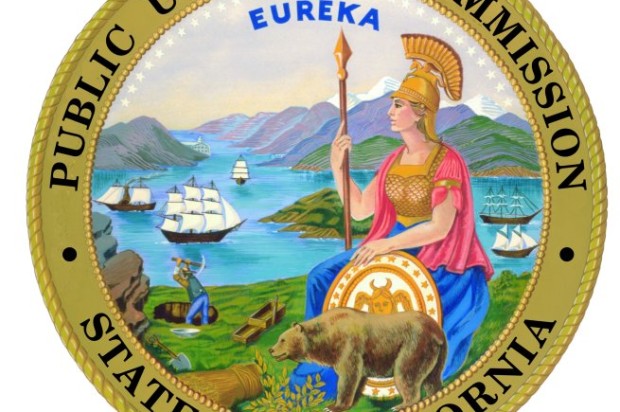
The California Public Utilities Commission today released roughly 65,000 email messages exchanged between PG&E Co. and agency officials between 2010 and 2014 as ordered because of a “judge shopping” scandal with PG&E, CPUC officials said.
Earlier this month, CPUC administrative law judge Amy Yip-Kikugawa ordered PG&E to provide the messages directly to the city of San Bruno and to the commission by the end of the day today. The emails were posted on the website shortly after 4 p.m.
The city of San Bruno asked for the release of the messages after a smaller set of emails appeared to show a cozy and improper relationship between the agency and the utility.
That set of private messages were sent by since-fired PG&E Vice President for Regulatory Relations Brian Cherry in Jan. 2014 to former Commission President Michael Peevey and Commissioner Michel Florio and to Peevey’s former chief of staff, Carol Brown.
In the emails, Cherry negotiated with the commissioners and Brown to influence the selection of a commission administrative law judge in a natural gas transmission and storage rate case.
The emails came to light after the city of San Bruno filed a lawsuit in February 2014 to force the CPUC to comply with four unfilled records requests dating back more than 10 months.
San Bruno officials became involved in legal proceedings against the CPUC and PG&E after a PG&E natural gas pipeline exploded in that city on Sept. 9, 2010, leveling a neighborhood and killing eight people.
The suit resulted in the CPUC handing over to the city more than 7,000 pages of communications between the CPUC and PG&E, exposing potentially illegal communication between the two. After those emails went public, PG&E disclosed additional emails and terminated three of its top executives.
In November, the CPUC imposed a $1.05 million fine for illegally judge shopping in the rate case along with an additional potentially multimillion-dollar penalty.
In her decision on the fine, Commissioner Carla Peterman wrote PG&E had “severely harmed the integrity of the regulatory process” by sending private emails to two commissioners and a top staff member in an effort to influence the selection of an administrative law judge.
PG&E Chairman and CEO Tony Earley said today the utility company had “learned critical lessons” from the experience and is working to develop a “world-class regulatory compliance model that reflects the highest ethical standards.”
“We’re absolutely committed to doing the right thing and to interacting with our state regulator in a transparent and ethical manner that upholds both the letter and spirit of the law and the company’s own code of conduct at all times,” Earley said in a statement.
Earley said the “vast majority” of the 65,000 communications have been “completely appropriate” but in the few instances that they were not, the company took “immediate and definitive action.”
“When we first discovered violations of the CPUC ex parte rules, we self-reported them, we held senior level officers accountable, and we are making independent law enforcement investigations into this matter,” Earley said.
In addition to the fine, the decision requires PG&E shareholders to absorb the cost of rate impacts to customers of a five-month delay caused by the investigation into the judge shopping.
Yip-Kikugawa is presiding over an administrative proceeding in which PG&E is seeking approval for an increase in rates levied on its Northern and Central California customers to pay for maintaining and modernizing its natural gas pipelines and storage facilities.
PG&E had already agreed in December to release the full set of emails to the commission by mid-February and has said the CPUC should develop and manage a process for “open public access” to the messages.
Yip-Kikugawa moved the date for release of the message to Jan. 30.
“Indeed, waiting until after the commission received the emails in February unnecessarily delays PG&E’s response to San Bruno’s data request,” the judge wrote.
San Bruno Mayor Jim Ruane said the release of the messages marks “a significant victory in the city of San Bruno’s tireless efforts to expose corruption at PG&E and the CPUC and to promote transparency for the safety and benefit of all citizens.”
“San Bruno’s fight for justice originally brought to light a shocking and illegal relationship between the CPUC and PG&E,” Ruane said in a statement. “The city’s efforts have now culminated in PG&E fighting — and losing — the battle to keep all 65,000 emails out of the public eye.”
Ruane said the city is looking forward to reviewing the records and “uncovering the full extent of corruption that we hope will no longer jeopardize public safety.”
Ruane again called for an independent monitor at the CPUC to deliver a critical watchdog function that been neglected by current CPUC leadership.
“Eight San Bruno citizens died on that horrible night in September 2010 – innocent victims of the same pattern of collusion and deception that we have fought hard to eradicate at PG&E and the CPUC,” Ruane said.
“Now is the time for actual accountability, for meaningful reform of both PG&E and the CPUC and for those responsible for the public’s safety to abandon the business as usual mentality that contributed to disaster so that what happened in San Bruno never happens again,” Ruane said.
The emails are located on the CPUC’s website and can be accessed by following the link
http://www.cpuc.ca.gov/PUC/events/pge_emails01302015.htm.
Erin Baldassari and Julie Cheever, Bay City News









